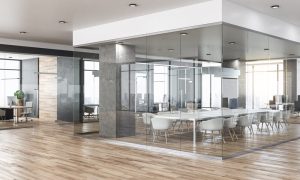Introduction
Fire poses a significant threat to buildings and human lives. As architects, engineers, and building owners seek ways to enhance fire safety, one crucial solution emerges: fire resistant coatings. These specialized coatings are designed to slow down the spread of flames and provide invaluable protection in the event of a fire. In this blog post, we will explore the importance of fire coatings, their benefits, and their role in safeguarding both buildings and lives.
Understanding Fire Resistant Coatings
Fire coatings, also known as intumescent coatings, are formulated to protect surfaces from the damaging effects of fire. These coatings act as a barrier, expanding when exposed to high temperatures and creating an insulating layer that prevents flames from reaching the underlying substrate. By delaying the spread of fire, these coatings buy valuable time for evacuation and minimize property damage.
Enhancing Structural Fire Safety
One of the primary purposes of coatings is to enhance structural fire safety. When applied to structural elements such as steel beams, columns, and walls, these coatings significantly increase the fire resistance of the building. By slowing down the temperature rise of the protected surfaces, coatings provide crucial support to the structural integrity, giving occupants additional time to escape and firefighters more time to respond.
Protecting Critical Infrastructure
Fire coatings play a vital role in protecting critical infrastructure such as hospitals, schools, and transportation hubs. These facilities often house large numbers of people and contain valuable assets. By applying coatings to key areas, such as escape routes, electrical rooms, and storage areas, the spread of fire can be effectively contained, limiting the potential for injury and minimizing the loss of important equipment or information.
Preserving Architectural Beauty
While fire safety is paramount, preserving architectural beauty is also essential. Coatings have come a long way in terms of aesthetics, offering a variety of finishes that blend seamlessly with the surrounding environment. Whether it’s a glossy finish for steel structures or a matte finish for wooden surfaces, coatings can be customized to meet both functional and aesthetic requirements. This allows architects and designers to maintain the intended visual appeal of the building while ensuring its fire resistance.
Easy Application and Maintenance
Fire coatings are designed with practicality in mind. They can be easily applied to various surfaces using conventional methods such as spray or brush application. The coatings adhere well to different substrates and can be integrated seamlessly into the construction process. Furthermore, these coatings require minimal maintenance, making them a long-term solution for fire protection. Regular inspections and touch-ups can ensure the continued effectiveness of the coating over time, ensuring optimal fire safety.
Meeting Building Code Requirements
Fire safety regulations and building codes often mandate the use of coatings in specific applications. These codes help establish minimum requirements for fire protection and ensure the safety of building occupants. By complying with these regulations and incorporating coatings into the design and construction process, architects and building owners can not only meet legal obligations but also provide a higher level of safety for all those who enter the building.
Advancements in Fire Resistant Coating Technology
The field of coatings continues to evolve, incorporating advancements in technology and materials. Manufacturers are constantly developing new formulations that offer improved fire resistance, durability, and sustainability. From water-based intumescent coatings to coatings with enhanced thermal insulation properties, these advancements provide architects and engineers with an ever-expanding range of options to enhance fire safety in their projects.
Collaborative Efforts for Effective Fire Safety
To ensure the successful integration of coatings into building design, collaboration is key. Architects, contractors, fire safety consultants, and manufacturers must work together to select the most appropriate coatings for each application. By involving all stakeholders from the initial design phase, potential fire risks can be identified, and effective fire protection strategies can be implemented.
Conclusion
Fire resistant coatings play a critical role in protecting buildings and lives from the ravages of fire. By enhancing structural fire safety, preserving architectural beauty, and meeting building code requirements, these coatings provide an essential layer of defense against the destructive power of flames. As technology advances and collaborative efforts continue, the effectiveness and versatility of coatings will only improve, ensuring safer buildings for generations to come.




